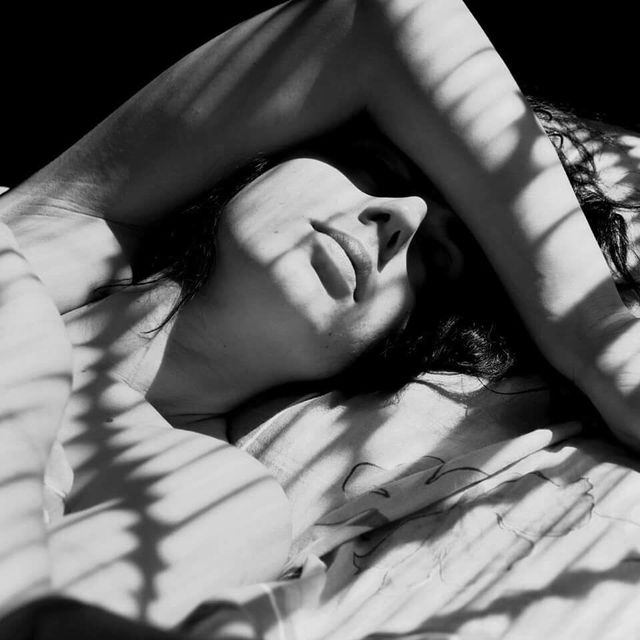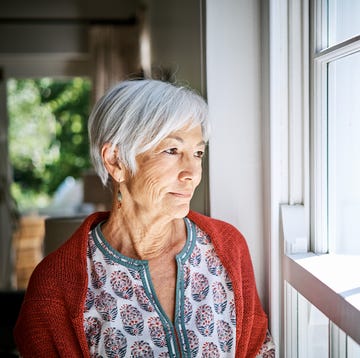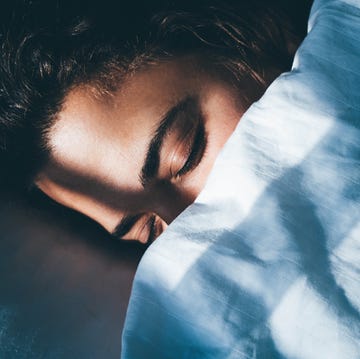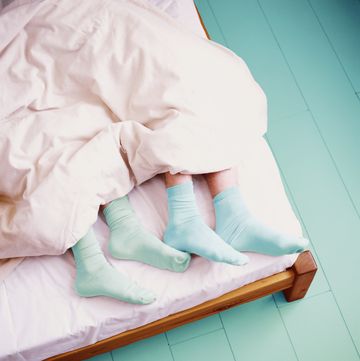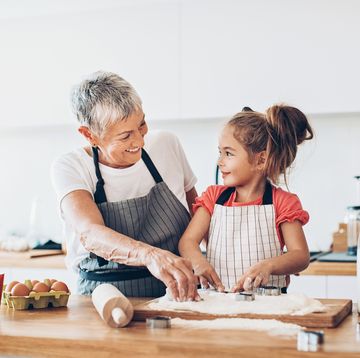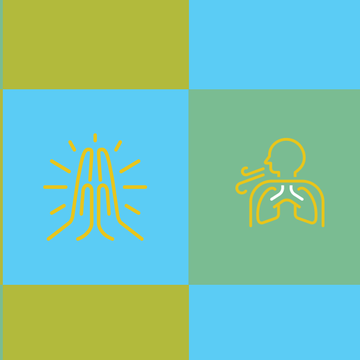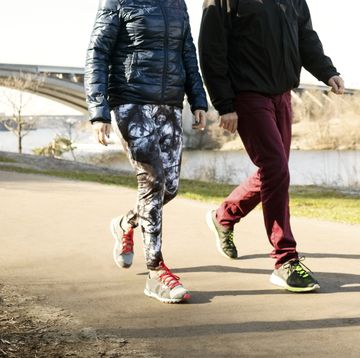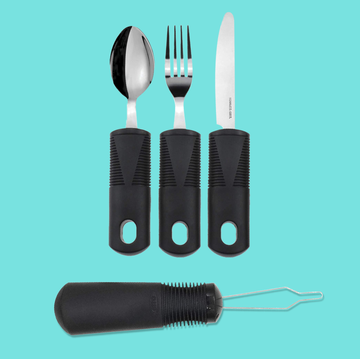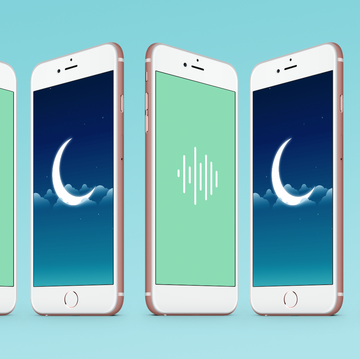If you've been suffering through weird, vivid dreams since we started staying at home, there are two things you should know: You're definitely not alone, as social media users have made #pandemicdreams trend on sites like Twitter for weeks, and it's absolutely normal, according to sleep experts. Even if you feel like you rarely experienced dreams before the novel coronavirus pandemic, there's a good chance that unavoidable changes in sleep patterns have led you to feeling like you're living through frightening or downright peculiar scenarios in your dreams. And stress may also be influencing the strange dreams (or terrifying nightmares!) you're having, even if you are getting more sleep in your new schedule than you did before.
In fact, a new survey conducted by King's College in London found that a majority of people in the United Kingdom are getting as much or more sleep now than they did before social distancing measures took effect. If you're still getting your usual amount of sleep, why might you be experiencing these new dreams? It probably has to do with the fact that most people are actually remembering their dreams now more than ever, says Britney Blair, Psy.D., a San Francisco area-based licensed clinical psychologist, behavioral sleep medicine specialist, and adjunct faculty member at Stanford University's Center for Sleep Sciences and Medicine.
Why are people having weird dreams lately?
Blair explains that dreams often occur during a REM (rapid eye movement) sleep cycle, when the brain is bathed in a neural chemical bath that can offset some of the stress we experience on a daily basis. The REM cycle helps alleviate stressful stimulus — a fight with your loved one, or a frightening accident — by only sorting some of it into long-term memory. But because the COVID-19 pandemic has largely brought on anticipatory stress, our brain is having trouble processing it during our sleep cycle, Blair says; unlike a car crash, for example, where there's a sequence of events that occur, the pandemic has been largely unfolding silently for many communities. All of this leads to a "kind of funky, odd content" that makes a dream so memorable in the first place, Blair says.
"The other thing that's happening is we have less stimulation during the day," Blair adds, explaining that a majority of people may be completing the same limited routine inside their homes for the last six weeks or so. "So, the brain has less content to kind of form into our dreams, which can also lead to funky, weird, or bizarre material we may have not remembered ever experiencing before." The type of simulation that people are mostly receiving comes from televisions and cellphones, including media that might be innocuously adding to people's stress levels.
Stress may be causing people to have restless or fitful sleep, Blair says, meaning they wake up more frequently in the night, which leads them in turn to recall the dream they may have been just experiencing moments before. "All of us have had stress in our lives; granted, we're at a next level scale right now, so we're all processing that stress in our dreams," Blair explains, adding that newfound financial stresses, concerns about safety, or even emotional stress caused by being cooped up in the house with roommates or loved ones could be threatening our sleep quality.
Blair says there's only one factor that plays into vivid COVID-19 dreams that you can control: The type of stimulation that you expose yourself to throughout the day, and more importantly, right before bed.
What can I do to prevent stress dreams during the pandemic?
While bizarre dreams can sometimes be amusing or even comical — which is why people are taking to social media to share in the first place — it's also clear that new stressful realities could be leading to frequent severe nightmares for some. Blair explains that there's a treatment protocol used with veterans and other at-risk communities known as image rehearsal therapy, which is a clinical resource used by sleep specialists. This therapy is largely reserved for individuals who can no longer sleep through the night without encountering stressful nightmares, mostly due in part to greater psychological issues that should be addressed.
But for most, funky dreams are being largely programmed by stimuli experienced up to 90 minutes before falling asleep, Blair says. "The best thing people can do is stabilize their sleep schedule," she adds. Here are three things you can do to keep your dreams as peaceful as possible.
- Establish a consistent bedtime and wake up time. "That's one of the best things people can do, because your sleep quality is most likely going to go up, which means you're going to wake up less frequently during the night, and the dream recall itself will be less because you'll have slept through it," Blair says.
- Limit your interaction with stressful media. "Try to restrict your news watching to 30 minutes in the morning and 30 minutes in the afternoon or early evening," Blair advises, saying that limiting your exposure right before bed could help you avoid dwelling on new stressors before you sleep.
- Schedule a buffer zone. "This is something I prioritize with my patients, referring to the period of 90 minutes before bedtime," Blair explains. "They should be using this time to rewind, reducing any exposure to stressful content — maybe they could be listening to quiet music, reading a good book, or even meditating using their phones for help. People can write out what's stressing them in the world, too… Write down what's stressing you out as a way to get it out of your head and onto a piece of paper so that your brain isn't trying to hold onto it through the night."
The COVID-19 crisis has made life more challenging for everyone. If you are struggling and need help, visit the National Alliance on Mental Illness’s COVID-19 Resource and Information Guide for resources.
Zee Krstic is a content strategy manager for Hearst Magazines, focusing on SEO optimization and other editorial strategies for four brands, including Country Living, House Beautiful, ELLE Decor and VERANDA. He previously served as Health Editor for Good Housekeeping between 2019 and 2023, covering health news, diet and fitness trends as well as executing wellness product reviews in conjunction with the Good Housekeeping Institute. Prior to joining Hearst, Zee fostered a strong background in women's lifestyle media with eight plus years of editorial experience, including as a site-wide editor at Martha Stewart Living after developing a nutrition background as an assistant editor at Cooking Light. Zee produces service-based health coverage, as well as design and travel content, for Hearst brands on a contributor basis; he has written about food and dining for Time, among other publications.
